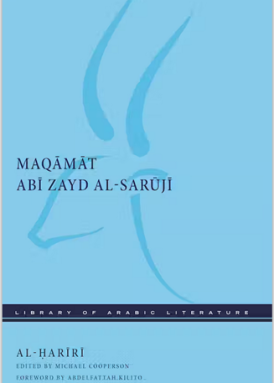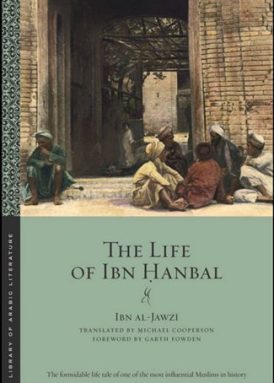Education
PhD, Near Eastern Languages and Civilizations, Harvard University (1994)
MA, Near Eastern Languages and Civilizations, Harvard University (1991)
Certificate, Center for Arabic Study Abroad, American University of Cairo (1988)
BA, Middle Eastern Studies, Harvard College (1987)
Research
The big projects are a visual-narrative history of pre-modern Arabic literature and a study of time-travel fiction as a global phenomenon. The small projects include a study (in collaboration with Ani Honarchian) of side-switching in the Akritic poems as well as an investigation of how non-native speakers learned Arabic in pre-modern times. I also take an amateur’s interest in modern Greek and in Hawaiian language and culture.
Publications
Co-Authored Books
- Interpreting the self : autobiography in the Arabic literary tradition. Ed. Dwight F. Reynolds. Coauthored by Kristen E. Brustad, Michael Cooperson, Jamal Elias, Nuha Khouri, Joseph Lowry, Nasser Rabbat, Dwight F. Reynolds, Devin Stewart, and Shawkat M. Toorawa. Berkeley: University of California Press, 2001.
Co-Edited Books
- The Dictionary of Literary Biography: Arabic Literary Culture, 500-915. Ed. Michael Cooperson and Shawkat M. Toorawa. Detroit: Thomson Gale, 2005.
- Classical Arabic Humanities in Their Own Terms. Festschrift for Wolfhart Heinrichs on 65th Birthday Presented by his Students and Colleagues. Ed. Beatrice Gruendler with the assistance of Michael Cooperson. Brill: Leiden and Boston, 2008.
Articles and Chapters in Edited Works
- “Al-Khiṭāb niyābatan ʿan al-ākhar” (“Speaking for the other”). Majallat al-Qāhirah 124 (1993): 58-65.
- “The Monstrous Births of Aladdin.” The Harvard Review of Middle Eastern and Islamic Affairs 1:1 (1994): 67-86. Republished in The Arabian Nights Reader, ed. Ulrich Marzolph. Detroit: Wayne State University Press, 2006: 265-282.
- “Baghdad in Rhetoric and Narrative.” Muqarnas 13 (1996): 99-113.
- “The purported autobiography of Ḥunayn b. Isḥāq.” Edebiyat 7:2 (1996): 235-49.
- “Aḥmad Ibn Ḥanbal and Bishr al-Ḥāfī. A case study in biographical traditions.” Studia Islamica 86 (1997/2): 71-101.
- “Remembering the Future: Arabic Time Travel Literature.” Edebiyat 8 (1998): 171-189.
- “Classical Arabic Biography.” In Understanding Near Eastern Literatures: A Spectrum of Interdisciplinary Approaches. Ed. Beatrice Gruendler and Verena Klemm. Wiesbaden: Reichert, 2000: 177-87.
- “Texts without illustrations: The visual imagination in classical Arabic biography.” Princeton Papers. Interdisciplinary Journal of Middle Eastern Studies VIII (2001): 7-20. Also published in Islamic Art and Literature. Ed. Oleg Grabar and Cynthia Robinson. Princeton: Markus Wiener, 2001: 7-20.
- “Two Abbasid trials: Aḥmad Ibn Ḥanbal and Ḥunayn b. Isḥāq.” Al-Qantara. Revista de estudios árabes. XXII, 2 (2001): 375-393.
- “The tomb of al-Ma’mūn in Tarsus: A preliminary report.” In Occasional Papers of the School of ‘Abbāsid Studies, Cambridge 6-10 July 2002. Leuven: Peeters, 2004: 47-60.
- ““Probability, Plausibility, and ‘Spiritual Communication’ in Classical Arabic Biography.” On Fiction and Adab in Medieval Arabic Literature. Ed. Philip F. Kennedy. Wiesbaden: Harrassowitz, 2005: 69-83.
- “Safar. The Early History of Time Travel Literature: Al-Muwayliḥī’s Ḥadīth ʿĪsā b. Hishām and Its Antecedents.” Classical Arabic Humanities in Their Own Terms. Festschrift for Wolfhart Heinrichs on 65th Birthday Presented by his Students and Colleagues. Ed. Beatrice Gruendler with the assistance of Michael Cooperson. Brill: Leiden and Boston, 2008: 419-446.
- “Al-Jāḥiẓ, the Misers, and the Proto-Sunnī Ascetics.” In Al-Jāḥiẓ: A Muslim Humanist for our Time. Ed. Arnim Heinemann, John L. Meloy, Tarif Khalidi, and Manfred Kropp. Beiruter Texte und Studien 119. Beirut: Orient-Institut, 2009: 197-219.
- “Culture.” In Key Themes for the Study of Islam. Ed. Jamal J. Elias. Oxford: OneWorld, 2010: 104-122.
- “Al-Ma’mūn, the Pyramids, and the Hieroglyphs.” In ‘Abbāsid Studies II. Occasional Papers of the School of ‘Abbasid Studies. Leuven, 28 June – 1 July, 2004. Ed. John Nawas. Leuven: Peeters, 2010: 165-190.
- “The Reception of Pharaonic Egypt in Islamic Egypt.” In A Companion to Ancient Egypt. Ed. Alan B. Lloyd. Chichester: Blackwell, 2010. 2:1109-1128.
- “Biographical Literature.” The New Cambridge History of Islam. Volume 4: Islamic Cultures and Societies to the End of the Eighteenth Century. Cambridge: Cambridge University Press, 2010. Ed. Robert Irwin. Pp. 458-473.
- Al-Ma’mūn and ʿAlī al-Riḍā (Emam Reza) on Iranian Television.” In The Rhetoric of Biography: Studies in Arabic, Persian and Turkish Narratives of Lives. Ed. Louise Marlow. 140-164. Washington, DC: Ilex, 2011.
- “Early Abbasid Antiquarianism: al-Maʾmūn and the Pyramid of Cheops.” In Traces, Collections, and Ruins: Towards a Comparative History of Antiquarianism. Ed. Alain Schnapp. Los Angeles: Getty Research Institute, 2014.
- “Ħarsa ġdida lejn ir-rakkont tal-Ħimjari dwar Malta.” In Il-Malti. Rivista tal-Akkademja tal-Malti 87 (2014): 39-49.
- “Bandits.” In Violence in Islamic Thought From the Qur’an to the Mongols. Edited by Istvan Kristo-Nagy and Robert Gleave. Edinburgh, 2015. Pp. 191-99.
- “‘Arabs’ and ‘Iranians: The Uses of Ethnicity in the Early Abbasid Period.” In Islamic Cultures, Islamic Contexts. Essays in Honor of Professor Patricia Crone. Leiden: Brill, 2015. Pp. 364-387.
- “Al-Ḥimyarī’s Account of Medieval Malta. A Reconsideration.” In Fuzzy Boundaries. Festschrift für Antonio Loprieno. Hamburg: Widmaier, 2015. Pp. 347-351.
- “An Early Conversion Story: The Case of al-Faḍl ibn Sahl.” In Oceanus Paedagogicis. A Festschrift in Celebration and Honor of Professor Ahmad Mahdavi Damghani’s 90th Birthday. Edited by Alireza Korangy, Roy P. Mottahedeh, and William Granara. Berlin: De Gruyter 2016. Pp. 386-399.
- “Daily Life in Baghdad.” In Baghdad at the Centre of a World, 8th-13th Century. An introductory textbook. Edited by Emily Selove. Fargo, ND: Theran Press, 2019: 23-32.
- “Mercier’s Carriages: Time Travel’s Primal Scene.” The Eighteenth-Century. Theory and Interpretation 60:2 (Summer 2019): 207-20.
- “Nashr al-ʿarabiyyah fī l-wilāyāt al-ʿamrikiyyah: naẓrah ʿāmmah wa-waṣf mashrūʿayn ʿalā ṣaʿīd alturāth.” (“Promoting Arabic in the United States: an overview and an account of two Classical-Arabic based projects.”) In Kayf nushirat al-ʿarabiyyah? Tajārib li-aʿlām min almukhtaṣṣīn al-nāṭiqīn bi-ghayrihā fī Asyā wa-Usturāliyā wa-Amrīkā. Edited by Badr ibn Nāṣir al-Jabr. Riyadh: King Abdullah Bin Abdulaziz Int’l Center for The Arabic Language, 2019, pp. 298-309.
- “900 Years of Trickery: Al-Ḥarīrī From Leiden to Los Angeles.” Journal of Abbasid Studies (2023) 1–25.
Courses
Undergraduate and Upper Division
- An introduction to reading pre-modern Arabic literature, for students familiar with Modern Standard Arabic (Arabic 130)
- A survey of pre-modern Arabic literature in English translation (Arabic 150)
- Arabic linguistics. Recent topics have included learning to read and understand Maltese (Arabic 180)
- A practical course in translating Arabic documents, journalism, and song lyrics, plus subtitle writing (Arabic 181)
Graduate
- Seminar in Pre-modern Arabic Literature (Arabic 250). Recent topics have included the Arabic literatures of pre-modern Africa and the Indian subcontinent.
Fields of Study
- Cultural history of the early Abbasid period
- Literary translation
- Maltese language and culture
- Time travel as a literary device




